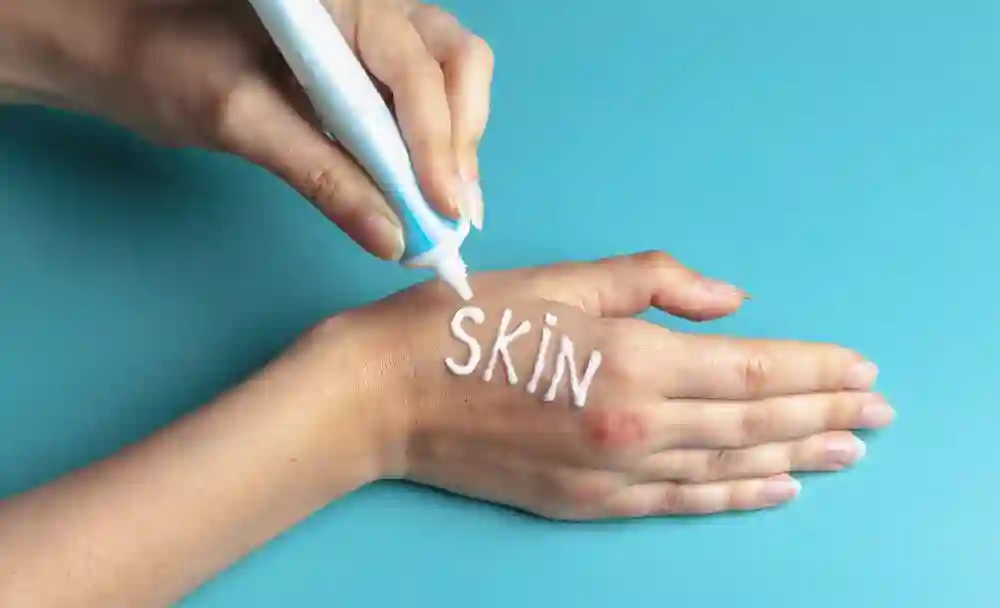This article is reviewed by an expert
Scleroderma, also known as systemic sclerosis, is a rare autoimmune disease that affects the connective tissue of the skin and internal organs, leading to thickening and hardening of these tissues. This occurs as your body produces too much collagen, which accumulates in the tissues and causes them to become thickened and hardened. This can lead to a range of symptoms and complications, including skin tightening, joint pain, gastrointestinal problems, lung disease, and kidney damage.
Causes Of Scleroderma
Researchers still do not have a precise understanding of scleroderma causes, but it is believed to involve an abnormal immune response in which the immune system mistakenly attacks healthy tissue, leading to inflammation and damage. There may also be genetic factors that increase the risk of developing the disease [1].
Symptoms Of Scleroderma
Scleroderma symptoms can vary widely depending on the extent and severity of the disease, as well as the organs and systems affected. However, some common symptoms include [2]:
- Thickening and hardening of the skin on the fingers, hands, and face, which may cause difficulty with movement and facial expressions
- Raynaud’s phenomenon, which is a condition in which the fingers and toes turn white or blue in response to cold or stress
- Joint pain and stiffness
- Gastrointestinal problems, such as difficulty swallowing, acid reflux, and diarrhea
- Shortness of breath and other respiratory problems, such as coughing and wheezing
- Fatigue and weakness
- Kidney damage
- Hypertension and heart disease
Scleroderma can also be associated with other autoimmune diseases, such as lupus or rheumatoid arthritis, which can complicate diagnosis and treatment.
Types Of Scleroderma
There are two main types of scleroderma [3]:
Localized Scleroderma
Localized scleroderma affects only the skin and underlying tissues, and does not typically affect internal organs. There are two subtypes of localized scleroderma: morphea and linear scleroderma. Morphea is characterized by patches of hardened, discolored skin, while linear scleroderma causes a line or band of hardened skin that often affects the limbs.
Systemic Scleroderma
Also known as systemic sclerosis, it can affect multiple organs and tissues in addition to the skin. There are two subtypes of systemic scleroderma: limited and diffuse. Limited systemic scleroderma typically progresses more slowly and affects the skin on the hands, face, and feet. Diffuse systemic scleroderma progresses more quickly and affects the skin on the arms, legs, trunk, and internal organs such as the lungs, heart, and kidneys.
Scleroderma Treatment
Scleroderma treatment plans may vary depending on the type and severity of scleroderma, as well as the specific symptoms and complications experienced by the individual. Here are some of the main treatments for scleroderma [4]:
- Medications: Various medications can be used to treat different aspects of scleroderma. For example, immunosuppressants, such as methotrexate or mycophenolate mofetil, may be prescribed to suppress the overactive immune response. Corticosteroids may also be used to reduce inflammation, although they can have long-term side effects. Medications to improve blood flow, such as calcium channel blockers, may be used to treat Raynaud’s phenomenon [5].
- Physical Therapy: Physical therapy can help improve range of motion, flexibility, and strength in affected joints and muscles. It may also help prevent joint contractures and improve overall function.
- Occupational Therapy: Occupational therapy can help individuals with scleroderma learn strategies to manage daily tasks and activities, such as adapting to changes in grip strength or using assistive devices to make tasks easier.
- Pulmonary Rehabilitation: Pulmonary rehabilitation can help individuals with scleroderma manage respiratory symptoms and improve lung function through breathing exercises, physical activity, and education on managing respiratory infections.
- Surgery: In some cases, surgery may be necessary to treat complications of scleroderma, such as lung or kidney disease.
- Lifestyle Changes: Making lifestyle changes, such as quitting smoking, staying physically active, and avoiding cold temperatures, can help manage symptoms and improve overall health.
Conclusion
Due to the limitations of conventional therapy, there has been increased interest in the use of traditional medical systems such as Ayurveda. Scleroderma treatment in Ayurveda includes a variety of herbal medications and therapies to correct dosha imbalances that are an underlying cause and can also develop as a result of scleroderma [6]. Ayurveda follows a holistic approach and may be used in combination with other treatments, but it’s important to consult all of the doctors involved before trying anything new.
Disclaimer: This article is written from a health & lifestyle perspective. Please consult a trained medical practitioner at all times. These are general information only and are not intended to replace professional advice or treatment.
References:
- https://www.mayoclinic.org/diseases-conditions/scleroderma/symptoms-causes/syc-20351952
- https://www.ncbi.nlm.nih.gov/books/NBK537335/
- https://www.niams.nih.gov/health-topics/scleroderma
- https://medlineplus.gov/ency/article/000429.htm
- https://www.niams.nih.gov/health-topics/scleroderma/diagnosis-treatment-and-steps-to-take
- https://www.ncbi.nlm.nih.gov/pmc/articles/PMC7346952/

















